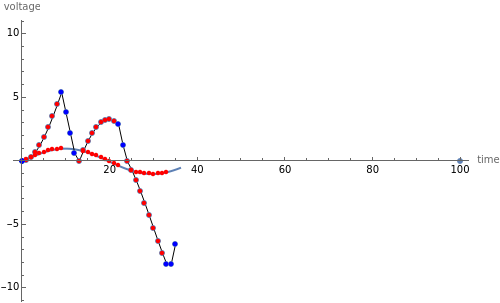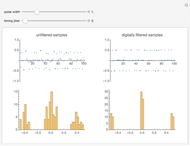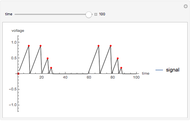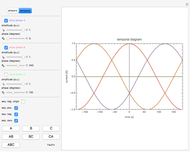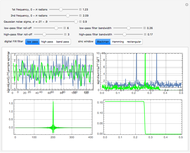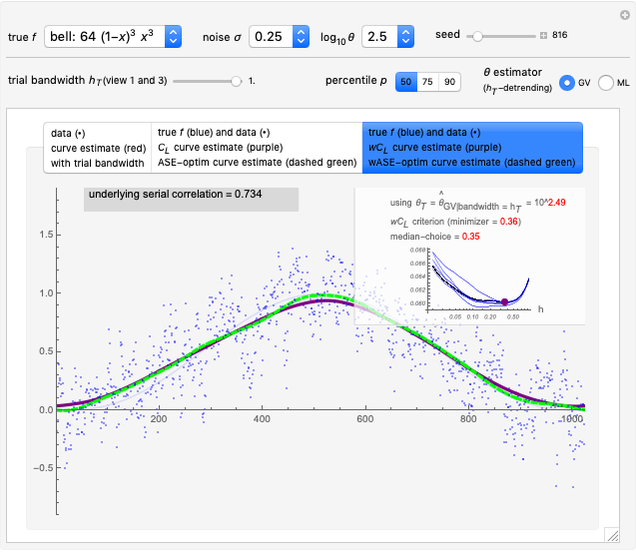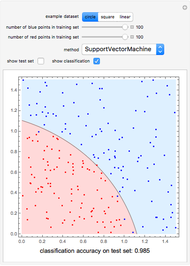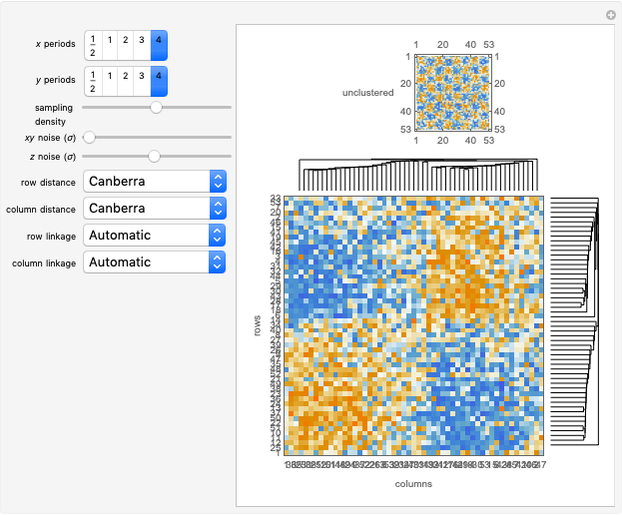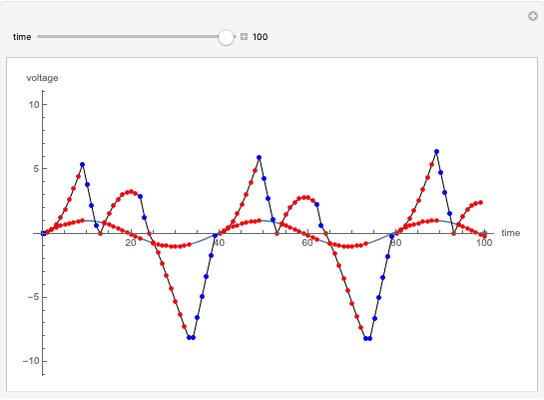Dual Slope Analog-to-Digital Converter

Requires a Wolfram Notebook System
Interact on desktop, mobile and cloud with the free Wolfram Player or other Wolfram Language products.
Analog-to-digital conversion has been increasingly important since the dawn of the digital era. There are actually dozens of different conversion techniques employed by electrical engineers, each with their own advantages and disadvantages.
[more]
Contributed by: Roy Rinberg (May 2014)
Open content licensed under CC BY-NC-SA
Snapshots
Details
Dual slope is a spin-off of the simplest types of analog-to-digital conversion, as shown in the Demonstration "Analog-to-Digital Conversion Algorithm with a Single Slope". Single slope operates by using a capacitor to create a linear voltage ramp to compare the actual signal to, and then recording the time it takes the linear ramp to reach the signal (as it is a linear voltage ramp, the time it takes is linearly proportional to the voltage itself). The problem with single slope is that it uses a capacitor as its method of integration; this requires a very consistent capacitor that does not accumulate errors over time (drift), which is not only very difficult to do, but very expensive. Interestingly enough, dual slope fixes this problem by having the capacitors do two integrations, one after another rather than just one. First the integrator integrates the signal, then it integrates a constant voltage; because these integrations happen directly after one another, you can set them to be the same  (the first one goes from 0 V to
(the first one goes from 0 V to  and the second goes from
and the second goes from  to 0 V) so you get
to 0 V) so you get  . Because these integrations happen thousands of times per second, you can assume that the resistor and capacitor remain constant during one pair of integrations, so you can cancel the
. Because these integrations happen thousands of times per second, you can assume that the resistor and capacitor remain constant during one pair of integrations, so you can cancel the  values on both sides. This makes dual slope very reliable with high fidelity, as it no longer depends very much on the fidelity of the capacitor (typically a very finicky component).
values on both sides. This makes dual slope very reliable with high fidelity, as it no longer depends very much on the fidelity of the capacitor (typically a very finicky component).
Reference
[1] P. Horowitz and W. Hill, The Art of Electronics, Cambridge: Cambridge University Press, 1998.
Permanent Citation
